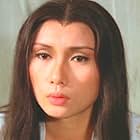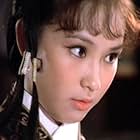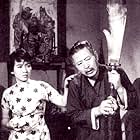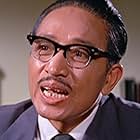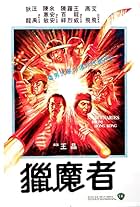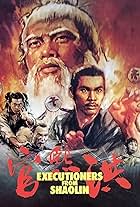IMDb RATING
6.9/10
4.3K
YOUR RATING
When thugs prey upon innocent factory workers, a small-time scammer trains for revenge by studying the moves of Shaolin temple monks.When thugs prey upon innocent factory workers, a small-time scammer trains for revenge by studying the moves of Shaolin temple monks.When thugs prey upon innocent factory workers, a small-time scammer trains for revenge by studying the moves of Shaolin temple monks.
- Awards
- 1 nomination
Yeong-moon Kwon
- Yuan Li-hao
- (as Yung-Wen Kuan)
Kara Ying Hung Wai
- Hsiao Hung
- (as Kara Hui)
Il-do Jang
- Erh Kun
- (as Yi-Tao Chang)
King-Chu Lee
- Monk San Te
- (as Ching Chia)
Sae-Ok Kim
- Laborer
- (as Hsi-Yu Chin)
Kwok-Keung Chan
- Fang Hsiao-Yu
- (as Kuo-Chiang Chen)
- Director
- Writer
- All cast & crew
- Production, box office & more at IMDbPro
Storyline
Did you know
- TriviaWu-Tang Clan member Ol' Dirty Bastard's debut album was titled after this movie, with adding "The Dirty Version" to the end. Ol' Dirty Bastard's album is titled "Return to the 36 Chambers: The Dirty Version".
- Quotes
Boss Wang: What style of Kung Fu is this?
Chao Yen-Cheh: Roof-top Kung Fu!
- ConnectionsFeatured in Chop Socky: Cinema Hong Kong (2003)
Featured review
Return to the 36th Chamber is one of those classic Kung-Fu movies which Shaw produces back in the 70s and 80s, whose genre is equivalent to the spaghetti westerns of Hollywood, and the protagonist Gordon Liu, the counterpart to the western's Clint Eastwood. Digitally remastered and a new print made for the Fantastic Film Fest, this is "Presented in Shaw Scope", just like the good old days.
This film is a simple story of good versus evil, told in 3 acts, which more or less sums up the narrative of martial arts films in that era.
Act One sets up the premise. Workers in a dye-mill of a small village are unhappy with their lot, having their wages cut by 20% by incoming manchu gangsters. They can't do much about their exploitation because none of them are martial arts skilled to take on the gangsters, and their boss. At first they had a minor success in getting Liu to impersonate a highly skilled Shaolin monk (one of the best comedy sequences), but their rouse got exposed when they pushed the limit of credibility by impersonating one too many times.
Act Two shows the protagonist wanting to get back at the mob. However, without real martial arts, he embarks on a journey to Shaolin Temple, to try and infiltrate and learn martial arts on the sly. After some slapstick moments, he finally gets accepted by the abbot (whom he impersonated!) but is disappointed at the teaching methods - kinda like Mr Miyagi's style in Karate Kid, but instead of painting fences, he gets to erect scaffoldings all around the temple. Nothing can keep a good man down, and he unwittingly builds strength, endurance and learns kung-fu the unorthodox way.
Act Three is where the fight fest begins. With cheesy sound effects, each obvious non-contact on film is given the maximum impact treatment. But it is rather refreshing watching the fight scenes here, with its wide angled shots to highlight clarity and detail between the sparring partners, and the use of slow-motion only to showcase stunts in different angles. You may find the speed of fights a tad too slow, with some pause in between moves, but with Yuen Wo Ping and his style being used ad-nausem in Hollywood flicks, they sure don't make fight scenes like they used to! Return to the 36th chamber gets a repeat screening on Monday, so, if you're game for a nostalgic trip down memory lane, what are you waiting for?
This film is a simple story of good versus evil, told in 3 acts, which more or less sums up the narrative of martial arts films in that era.
Act One sets up the premise. Workers in a dye-mill of a small village are unhappy with their lot, having their wages cut by 20% by incoming manchu gangsters. They can't do much about their exploitation because none of them are martial arts skilled to take on the gangsters, and their boss. At first they had a minor success in getting Liu to impersonate a highly skilled Shaolin monk (one of the best comedy sequences), but their rouse got exposed when they pushed the limit of credibility by impersonating one too many times.
Act Two shows the protagonist wanting to get back at the mob. However, without real martial arts, he embarks on a journey to Shaolin Temple, to try and infiltrate and learn martial arts on the sly. After some slapstick moments, he finally gets accepted by the abbot (whom he impersonated!) but is disappointed at the teaching methods - kinda like Mr Miyagi's style in Karate Kid, but instead of painting fences, he gets to erect scaffoldings all around the temple. Nothing can keep a good man down, and he unwittingly builds strength, endurance and learns kung-fu the unorthodox way.
Act Three is where the fight fest begins. With cheesy sound effects, each obvious non-contact on film is given the maximum impact treatment. But it is rather refreshing watching the fight scenes here, with its wide angled shots to highlight clarity and detail between the sparring partners, and the use of slow-motion only to showcase stunts in different angles. You may find the speed of fights a tad too slow, with some pause in between moves, but with Yuen Wo Ping and his style being used ad-nausem in Hollywood flicks, they sure don't make fight scenes like they used to! Return to the 36th chamber gets a repeat screening on Monday, so, if you're game for a nostalgic trip down memory lane, what are you waiting for?
- DICK STEEL
- Jun 24, 2005
- Permalink
- How long is Return to the 36th Chamber?Powered by Alexa
Details
- Release date
- Country of origin
- Languages
- Also known as
- Master Killer II
- Production company
- See more company credits at IMDbPro
Contribute to this page
Suggest an edit or add missing content

Top Gap
By what name was Return to the 36th Chamber (1980) officially released in India in English?
Answer










